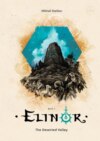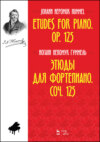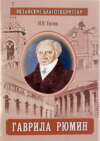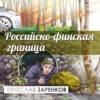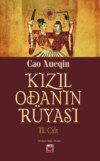Buch lesen: «Elinor. The Deserted Valley. Book 1»
© Mikhail Shelkov, 2019
ISBN 978-5-4496-1345-5 (т. 1)
ISBN 978-5-4496-1346-2
Created with Ridero smart publishing system

The Deserted Valley
Author: Mikhail Shelkov

Table of contents
Prologue
Part 1. The Ways And The Paths
Chapter 1. Lion Constellation
Chapter 2. The Essence Of The Warrior.
Chapter 3. From The Wilderness To The Light
Chapter 4. The Deprived From The Skies
Chapter 5. The Lily Pearl
Chapter 6. The Secrets Of Golems
Chapter 7. Airy Deer
Chapter 8. The Justice Clan
Part 2. The Secret of The Deserted Valley
Chapter 1. Old Owl
Chapter 2. The Iron Souls
Chapter 3. The Vambraces Of Innocence
Chapter 4. Min-Mirif
Chapter 5. On The Edge Of The War
Chapter 6. The Contraband
Chapter 7. Take The Dead
Chapter 8. The Darkness Above The Valley
Chapter 9. The Fifteen Brave Ones
Chapter 10. Adej’e-Vinomes
Chapter 11. Fire And Ashes
Chapter 12. The Thunder Rumbled
Chapter 13. The Caravans Stopped
Chapter 14. The Hidden and The Obvious
Chapter 15. The Treasure Of Aldego
Chapter 16. Umar Amatt
Chapter 17. To Each His Own
Chapter 18. The Flesh Of The Demon
Chapter 19. The Black Shaman
Chapter 20. Shoulder To Shoulder
Chapter 21. The Healers
Chapter 22. Calm And Freedom
Epilogue
PROLOGUE
A wise man, whose name unfortunately has been forgotten, said that the journey of a thousand leagues begins with a single step.
My journey started well over a month ago, and nobody knows when it will end – not a single person. Perhaps it is only the sublime stars on the canvas of the night sky that know – those stars which I wholeheartedly love. But even if they do know, they will hardly reveal it.
I left my family, my home… and my heart tells me that this time, I’ll be gone for a long time, perhaps forever.
Great Asters! What nonsense, indeed… I keep telling myself. I am no longer that same impressionable girl who admired the wide and many-faced world. The world that carries the name Elinor. Now I am a teacher and mentor to such girls. But for some reason (it might be that my hunch is awakening, a hunch that has never lied to me; or that old childhood dreams never died, but only subsided), I believe that my journey will not just be long, but great. And… yes, I’ll write it. It will end at the Edge of the World.
Oh, sandy depths! At last, I admitted it to myself…
Well, it is likely that in half a century, this diary will be read by my grandchildren who will smile to themselves, although not in the open – for it is indecent – about the erstwhile dream of their grandmother, who at the time will be quietly rocking in her chair, trying to embroider patterns on their robes with a large needle in her shaking hands.
What am I talking about? As though I don’t regret wasting neither ink, nor paper, nor my time! It is better to get to the point!
Today turned out to be a day off. The owner of the caravan is unwell – he probably overate again in the heat. Therefore, everyone – merchants, warriors, and my students – are spending the day under the shelter of the tents, set up in a small oasis.
There are a few trees here, but there is a stream and a rocky ridge, so the heat is not felt, and the break is truly enjoyable. It is strange that no one has built an outpost next to the oasis with a camel yard and teahouse yet.
As though we are not following the main tract!
But according to an astronomer’s calculations (a real astronomer!), in a couple of weeks we will reach our final destination.
I will finally contemplate the Valley of the Ancestors – the heart of Elinor!
The Valley of the Ancestors or, as many say, the Valley, is where life began. It was from the Valley of the Ancestors that the new people of the Third Race dispersed throughout the lands of Elinor and settled there. It was then that a man named Tosho, who became emperor and subsequently acquired immortality, led likeminded people to the north; it was then that the Valley’s migrants went into the deep forests where they met the Ved tribe and founded the Vedich nation; it was then that the father-founder of our glorious Djunitian people, the great Marawie, led people into the endless desert.
And now the people of the desert are returning to the Valley. It is like a time rotation.
Emperor Tosho founded the Itoshinian nation, from which came two more races, the Ulutau and the Tuasmatus. The Taurs evolved from the Vedichs, and the Guawars evolved from the Djunits. Only the carefree Chekatta remained in the prairies near the Valley of the Ancestors.
The Valley itself and its Great Cities of Dalaal, Konolwar, Eavette, and Mata-Mata were fragrant with life in the heart of the Elinor, at the crossroads of trade routes, at the junction of customs and cultures of people who had become so different from each other, so unique. Though the Valley had always been a separate state, it would nonetheless welcome any visitors from distant lands. Every inhabitant of the Valley now associated him/herself with some nation, still primarily remaining a resident of the Valley, a sort of representative of the Ninth nation, a collective image of all the people of Elinor.
Perhaps this is the essence of existence? Parents raise their children, care for them, protect them… but they eventually lose their power, become senile, and then the grown-up and established children must take care of their parents.
Similarly, the Valley gave birth to and brought up eight nations. But at a certain point, it died. The Valley had become deserted. And now the children of the Valley, the representatives of the eight nations, have hit the road to resurrect their mother – to fill her with life. Our caravan is heading north to bring to the Great Cities the necessity – people. Many caravans took off several months ahead of us and many will follow.
From distant lands, from the remaining seven nations, other envoys head to the Valley. Soon, I will meet again the Taurs, Guawars, Itoshins, and Mechanicum, who I haven’t seen for a long time. I look forward to getting to know the Ulutau and Chekatta, who I have never seen in my life, and so much more! And the Vedichs! The Vedichs themselves! The people who can shape-shift into the beasts of the forest! However, none of the venerable scientists have confirmed this, and those sources that even the most distinguished historians have relied upon seem quite dubious. But that’s how the legends go, and I myself am not sure if I’m inclined to believe them or not.
Here I write about what I am waiting for, what will happen in the future. I write about the future, as it is meaningless at present to write about the present.
Tomorrow, if Khatum Tangut wins over his indigestion, a procession of camels, which belong to him, will once more stretch towards the horizon through the yellow sands carrying with them, warriors, merchants, and myself with my students.
In the desert, interesting things rarely happen; all the days are alike. To come across an oasis is great luck, but hardly can such a meeting be equated with an extraordinary event. Now, meeting the scorpio-angler or a school of sand dragons – that is a whole different story! Every night I pray to the stars for these meetings not to happen on our way. The soldiers guarding the caravan are arrogant and conceited, and the desert does not forgive such attitudes. It is unlikely that their strong bodies hold as strong a spirit.
Fortunately, both the anglers and dragons have long ago ceased to dwell near the trade routes. People, though slowly, are beginning to prevail in this war that has lasted for many centuries.
I do not know what else I should write about.
As I said before, writing about soldiers, merchants, and cameleers is silly.
About my disciples? They are ordinary children. Sometimes they bring me joy; sometimes, sorrow. Sometimes they delight in things, other times they upset themselves. They try to endure the hardships of camp life in the Great Desert. To some, it comes easy, to others it is difficult. Almost an adult, Calif constantly helps me and Lamis. It’s so good that he is near. He is no longer a boy, almost a man. The other students can be left to his care for a while. The girls have to be soothed every day and be told about the beautiful life in the Valley. Then they cease to moan and require so much attention. I understand them, although I have never been like them myself. They are the girls of noble families, used to houses with light walls and green gardens nearby, and not to the eternal heat and fiery air of the day and tangy cool of the night. In this regard, the boys are simpler, but with them there are other problems. One runs around all day long with a miniature sword, killing scorpions; another picks up all the prickles on the road to investigate them; and someone tries to start a fight with a peer… But I’m used to them. And I love them; I love them as their mentor.
Maybe I can become a good teacher. Mother is sure to approve the idea of school education becoming the main profession of my life. But then I’ll go mad from boredom. My path is different.
Then what else should I write about?
I’ve said enough about myself in the preceding pages.
I am trying to keep a diary the way it should be done by any Djunitian researcher who has self-respect. So I was taught by my father.
Father, Father…
You would’ve been proud of me…
I know that you are proud of me!
I believe in our impending meeting!
I am definitely not in the mood to write more. That is all for today!
Jumanna Inaiya Khaniya Amatt
J. I. Kh. A., 4th day of the Elephant month, the year 531, era IV…”
This History of Elinor is an appendix to the book. Both the author of the book, and compiler of this diary strongly recommend that you read it before reading the main body of this book to learn more about the history, geography, life, and culture of states in Elinor and people inhabiting the continent.
Part 1. THE WAYS AND THE PATHS
CHAPTER 1. Lion constellation
Our way lies among high dunes, and worse
That under scorching Eternal Aster flying,
But leads us forward with his rabid force
He who is always young, the Sandy Lion!
From odes by Samir Korzun “Sand and Wind”
1
Lamis finished writing. A sharp gust of dry wind broke in, throwing a handful of fine sand on the pages of the diary. The young woman shook off the sand, blew on the manuscript, and shut the diary. She closed the jar of ink and hid the writing feather. Tired from writing, she stretched her beautiful long bronze fingers as Moualdar, a gloomy boy of twelve years, ran into the tent. He came up close, hanging his head.
“I’m bored,” he grumbled.
“You can go feed the camels. The caravanners are always happy to be helped.”
“I don’t want to… I’m scared of camels,” his voice squeaked, reminding the young caretaker that the apprentice, despite his visage, was still just a boy.
His facial features are of an adult, yet he asks for attention enough for three kids to share.
By then Calif had also appeared under the canopy of the tent.
Calif was tall and stately. From the first glance, it was obvious he was a future warrior. Something in him was reminiscent of the young caretaker’s brother, only her brother’s hair was short and straight, while Calif’s was long and curly. Moreover, Calif’s eyes were not as stern. His figure was still one of a strong young man, but not yet a weather-beaten warrior.
It would be great if one day Calif came to learn the art of war from her brother!
But now Calif was headed to the Valley with her. And it was with him that the caretaker was pleased the most. As the eldest, he was always ready to help; he respected her and helped to monitor the disciples.
“Honorable Tangut Khatum said that he is better, so tomorrow at dawn, we are advancing!” said Lamis.
“Do you need any help?” Calif immediately blurted out.
“Yes!” All the minor problems were solved at once. “Collect the totes!” she said to Calif, then looked at Moualdar. “And you go help!”
The boy snorted discontentedly. Obviously, this was not how he wanted to dispel his boredom.
During the encampment, the disciples were allowed to devote the day to the classes of their choice, and completely unpack their hiking knapsacks. Yet the sun was already swiftly rolling towards the horizon; its rays no longer carried as much of the sizzling heat. Evening was approaching. It was time to get ready for the journey, so as not to bustle about during the morning gathering, but rather, after having leisurely broken their fast, to pack up the caravan and set off without delay.
Lamis, the faithful assistant, withdrew, dragging with her the disgruntled Moualdar. The well-mannered Calif turned to his caretaker and just before leaving made a traditional courteous bow. The canopy of the tent swung closed.
A smile lit up the young woman’s face.
He’s an absolute miracle!
Now it was necessary to bring all the disciples together, announce that the encampment would not be prolonged, and remind everyone to fill their waterskin bags to the brim with water.
Though I’ll still have to check before we set off… these are children. They see the world differently. Some still don’t understand what a dangerous place it is, they don’t understand there are no parents here who will blow the sand off them, or that though their caretaker is strong and brave, she is not unlimitedly sturdy – I will not be able to carry a separate bota bag for each of them. It will be useful if, from this passage through the Great Desert, everyone learned a certain lesson for themselves. The lesson that no school can give, the lesson that only life teaches.
It was also necessary to get everyone to bed early. Even a short respite is a knockout from the working rhythm. Hence, tomorrow’s wakening would be that much harder.
Therefore, for today, the essential thing was sleep! Sleep… a dream!
The young woman remembered last night’s dream. In it, she saw the Valley of the Ancestors in all its glory, and it was exactly the way she had pictured it from her father’s stories.
The four great cities of Dalaal, Konolwar, Eavette, and Mata-Mata were located on the shores of the Lake of the Ancestors and the Huma River. A burgomaster ruled each city. The Valley had always been considered a separate state, but it would be more correct to see it as an association of the four Great Cities.
The Great Desert of the Djunits did not fall under the single authority of a particular ruler. To be perfectly precise, that was how it was before, at the beginning of the Fourth Epoch. Over time, rulers realized that every city-oasis in the midst of endless sands lived its own life, and if self-government was granted to these settlements, the entire trading system would benefit. Since then, the cities of the Djunits were governed by the izirs. The clan of Djunitian kings, originating from the Marawie Sandy Lion, became part of the clan of the izirs of Kay-Samiluf, the largest and most powerful city in the Great Desert. This family was later overthrown, and nobody knows in whose veins the blood of the founder-father of the Djunits now flows. Nonetheless, all the cities of the Djunits are subject of the will of the council of the Kay-Samiluf Academy, which retains the right to interfere in the affairs of the izirs. Hence, in a way, the Great Desert can still call itself a state.
In the Valley, everything is done differently. In extreme cases, the Council of Four convened, where the burgomaster conjointly solved economic and political issues. If no agreement was reached, the popular assembly entered the disputes, where absolutely every inhabitant of the Valley could defend his point of view.
Clans were factions united by a common idea and were an important social force in the Valley on which burgomasters and other officials relied. Most often, clans were economic or political conjunctions. The famous Justice Clan long stood on the side of law and order. Clans of scientists and researchers rarely participated in the machinations of officials; however, they were always revered and even received money from the treasury of each city.
Extending both over the inhabitants themselves and the representatives of all eight nations, there was a single law in the Valley of the Ancestors, regardless of the laws proclaimed in their lands. All trade routes converged in the Valley. There was even trade with the severe Ito Empire in the north. The valley supplied provisions, ore, and even fabrics for the emperor Tosho, and he, having only bare stones and dank fogs in his lands, paid with the best that he could offer – a military force to ensure order.
Trade was not the only thing that supported the Valley of the Ancestors. The praise for its fairs, theaters, circuses, and tiltyards never stopped. The works of the writers and poets of the Valley were dispersed throughout Elinor. The Valley gave the people a Common Language, which foreigners used to communicate amongst themselves. As a result, the Guawars, the first sea merchants, were the first to completely switch to the Common Language, soon followed by the Djunits, who retained their language only for historians and scribes.
The Valley was also a den for charlatans, thieves, and other rascals. Some great adventurers also found themselves in it, those who, from vagrants, became burgomasters.
The Valley was the heart of Elinor, and the heart of the Valley was the Stone of the Ancestors – a mighty relic, probably preserved from the First Race. The Stone of Ancestors emitted Power. The Djunits called it special energy, the other nations called it magic, but its nature was inaccessible to understanding. The Stone of the Ancestors could predict the future, could heal illnesses, and could confer a part of its power on the pilgrim. But not always. Not for all… The Stone of the Ancestors lived its own life and used its magic at its own will. It could even defend itself. A gang of vandals who wanted to break it into pieces, thus intimidating the Valley, was simply incinerated alive by he Stone.
The Valley! The eight nations!
The colorful cities, the markets, the performances, the sounds of music and foul market language from the motley crowds, the beautiful house chambers and the stench of dirty taverns filled with both military clashes and peaceful human life, the green forests and prairies surrounding the Great Cities, the sky-blue water of the Lake of the Ancestors, and the Stone itself – all this happened last night in a dream, as though it were all truly there!
And then… this multicolored mess was at once covered by a black cloud.
This was the end of the dream…
The young caretaker shuddered. She realized she had dozed off, remembering the dream. She shook her head and looked around. The tent was still empty, only the air was not as stuffy as before – it meant that sunset was coming.
But instead of hurrying to her students, the maiden paused briefly. She opened a diary, which she had kept in her hands all this time.
She started flipping from the first page. She made these records a little more than a month ago in her parents’ house in Kay-Samiluf, the night before the caravan left. That night she could not manage to fall asleep.
2
“Midnight. The beginning of the sixteenth day of the month of the Wolf, the year 531, era IV…”
As an ancestral researcher, I start the diary before the beginning of my journey. I would like to write “the Great Journey,” but can’t know in advance how it will turn out. I can only know how I feel about myself.
About myself.
My name is Jumanna Inaiya Khaniya Amatt. I am a descendant of an ancient and noble family.
The Amatt clan became famous throughout Elinor during the construction of the cities of Min-Mirif and Til-Mirif. The construction was supervised by one of my glorious ancestors, a great engineer and thinker, Mirif Amatt. Built at the very end of the Third Era, Min-Mirif became the southernmost city of the Valley, denoting its southern boundary. Further away, the endless desert of the Djunitian began. The riches of the mines near where my ancestor built the cities were truly inexhaustible. Gold, silver, semi-precious stones, iron ore for the best, most solid steel… Soft metals, meanwhile, were useful on farms, and clean flint could be taken from the earth with bare hands.
The cities were quickly populated by people, and on the outskirts of Min-Mirif, in the shadows of majestic palms and sycamores, on the shores of ponds with water of extraordinary blueness, grew the Amatt estate.
When I was six, I visited my family estate. As soon as I was old enough to leave home, my father took me on my very first trip. My birthday was celebrated on a grand scale, but the day itself I cannot remember – I remember only that I yearned to begin the journey! Despite my age, the road was my strongest passion, and there was nothing I could do about it.
My dear mother, the noble Khaniya Haliya Mufa, by marriage an Amatt, the granddaughter of the izir Doyno-Kash Kharun Mufa, was distinguished by her strict views, moral purity, and undoubtful placement of the family above all else. She believed I could leave home, though only to go to school at the Academy of Kay-Samiluf; and this school was but two blocks away from our house! I did not want this… I wanted to see the desert, the endless expanse. I wanted to see caravans, people of other nations, other cities and faraway lands… Mum tried to hold me back until the very end, but I knew she would give in eventually.
Despite her strictness, her weakness was my father, Umar Amatt, who had recently become the leader of the Old Pages Clan. Mother’s love for Father knew no bounds; she could not oppose him. And my father could not refuse me, as he saw my passionate interest in everything new and everything unusual. I was growing up much too like him… dreamy, windy, and thirsty for discovery.
So, my first trip was to Min-Mirif. At the end of the day, the Great Desert impressed me, but much less than the ancestral estate. What is the desert? Delight is present only at first, when you realize that there is only you and your caravan surrounded by the sand, the sky, and the horizon line between them. I watched this landscape one day, then another, and it didn’t change. Yellow-reddish barchans, endless dunes, plain blue sky without a single cloud and the white circle of the scorching sun. My interest quickly died away as I sat in a small armchair on the hump of a huge camel under a velvet canopy, drinking cool water and fanning myself.
And then one night I could not sleep. I left the tent once I thought my father was asleep (as it turned out, he did not sleep and had seen everything), and found myself under the black dome of the night sky, dotted with countless glowing stars. It was the most beautiful thing I had seen in my life! Many years have passed, but I still can’t forget how, even though I was a clever, albeit young, child, I stood right before the cosmic abyss, as the distant, delightful stars seemed to wink at me.
And the Amatt estate… Oh! It seemed to me a city within a city! Of course, Min-Mirif itself seemed boring to me after Kay-Samiluf. But the ancestral nest Mirif Amatt had clearly been built with great enthusiasm and inspiration, with greenhouses full of flowers and fruit trees from all over the continent, fountains spurting beyond the roof of the mansion, halls with statues and columns. The underground part of the estate turned out to be several times larger than the mansion itself. There was everything – cabinets, a library, an alchemy laboratory, even a secret passageway to the mine. The underground halls were entirely decorated with precious metals and gems found in the local mines… I squealed with delight when night fell on Min-Mirif and my father guided me into the observatory tower and taught me to position myself on the map of the starry sky.
I had many teachers in my life. My father hired the best ones so I would receive a good education. But he taught me astronomy himself because he didn’t entrust it to anyone else. It was a little strange… Umar Amatt had gained fame as an explorer and writer. Other learned scholars taught me literature and history… But astronomy – only my father!
Yes, obviously, he saw me that night when I left the sleeping tent, so small and defenseless before the whole universe.
I did enroll into the high school of the Kay-Samiluf Academy and graduate with honors. My enrollment happened when I was twelve. Before that, I spent six years on a family estate. The best sages of the Valley came to teach me the basics of science. But the best teacher remained my father… I am grateful to him for his lessons on astronomy, but the most valuable lessons were those about life, which, maybe, my father gave me without even knowing it.
The Old Pages Clan had its own museum in the mansion of Amatt. There was a collection of rare peculiar things, which were brought from different corners of Elinor, that I hadn’t even seen in the Kay-Samiluf Academy museum. Many relics emitted special energy; I felt it. My father didn’t, but he believed me. He said that people react to special energy and magic differently.
Indeed, our scientists agree on the idea that this energy exists, but none of them can explain its origin. Even if some of the alchemists managed to equip objects with magical abilities, it only happened by the experimental method or by the long arm of coincidence. There is no scientific theory about obtaining this special energy. The Mechanicum (Tuasmatus) do not reveal their secrets to anyone. But our scientists aren’t sure that the force with which many of their mechanisms work is the same magic that, say, the Ancestral Stone and other antiquities emit. I believe that special energy, controlled by the Mechanicum, is more explicable by science than the special energy of the First Race.
Azir Amunjadee wrote in his works that the secret of special energy was mastered by the Ulutau – mastered through self-knowledge and self-improvement. But is this the same inexplicable energy that I’m talking about? The whole world still questions the role of special energy (magic) in the bodily transformations of the Vedichs. If, of course, those transformations are true…
But I do feel magic! I know it…
I constantly asked my father to take me to The Stone of the Ancestors in the Valley. But he always flatly refused… Father, who had only ever encouraged my curiosity, refused me! He said that I wasn’t old enough for the Valley.
It seems he considered traveling through the desert, where there was a small, but still existing probability of meeting a scorpio-angler or dragon, less dangerous than living in the Valley. My father had always spoken of the Valley reverently and thus had only aroused my imagination further, but at the same time refused! Perhaps that’s why I still think about the Valley with some apprehension, but nonetheless with admiration also.
I traveled a lot, indeed! After all, I already mentioned this is the greatest passion of my life, and it is impossible to satisfy a great passion! I visited the Golden Ruins twice… I visited the outskirts of the Nanol-Mo forest. I saw the powerful Taurs and their settlements made of logs in the middle of forest glades. And for my twelfth birthday, before entering high school, my father gave me a gift – he took me to Bandabaze! Yes, to the largest city of the Guawars!
From the port of Chail, on the light and high-speed ship “Lightning”, we arrived in Bandabaze in four days! Four days! A caravan of camels from Kay-Samiluf to Min-Mirif sometimes takes up to two months. And here – four days! And then we spent another week on a ship from Bandabaze to Doyno-Kash. Incredible! To this day, my mother doesn’t know that I’ve been to Bandabaze… My father and I agreed not to tell her. If she knew, then probably in a fit of anger she would have killed both of us. I’m exaggerating, of course. Mother is kind. It’s just that the Guawars are looked upon as dirty robbers and pirates.
My father still preferred a trip to Bandabaze to a journey to Valley. Why? I don’t believe the Valley markets are more dangerous than Bandabaze!
By the way, the Guawars do seem wild and scary at first. Especially for those brought up in the noble Djunits families. But I had traveled enough to understand the beauty of these sea people. And I fell in love with the sea! It was then that I decided that, one day, I would sail away on the Guawarian ship to the east… To the Edge of the World!
I thought Kay-Samiluf was a noisy city, and no other will surpass it. I was mistaken! The buzz of commercial areas, complemented by music from taverns and street chants, cannot be drowned out, even if you stuff your ears with Ayno-Sufic cotton wool. Your nostrils are always tickled with the sugary smells of fruit and hot spices, which are mixed with the aromas of fried fish and the stink of foul fish. To the rhythm of the Guawarian gulps, tamed beasts tingle from all-around – screeching monkeys, small fluffy tics, and huge talking parrots shimmering with all the colors of the rainbow.
In the middle of the city, opposite the Royal Bay, towers the palace of the Governor of Bandabaze. The palace of our izir is a yellow-golden hue like the sandy djunes. On the contrary, the Guawarian Governor’s one is snow white! A snow white palace, with azure sea and evergreen forests all around.
Thank you, Father! I will never forget that journey! It was the best birthday of my life!
My father and I returned to Kay-Samiluf from the port of Doyno-Kash. And since then, I haven’t seen him… Father went to the Valley. Later he visited the caravan in the Shohan, the capital of the Ito Empire, and the kingdom of Reyro, a Tuasmatus abode. He was going to visit the Vedichian.. Oh, he would have definitely discerned their secrets.
He wrote and wrote about his travels… About the fact that he visited the reception of the Emperor himself, that he saw the golems in the Mechanicum (and, by the way, didn’t feel any magic) and rode mammoths, the huge shaggy elephants of the north. Meanwhile I dissolved into melancholy in the stuffy walls of my school in Kay-Samiluf. I dreamed that one day, I would go on a new fascinating journey.
